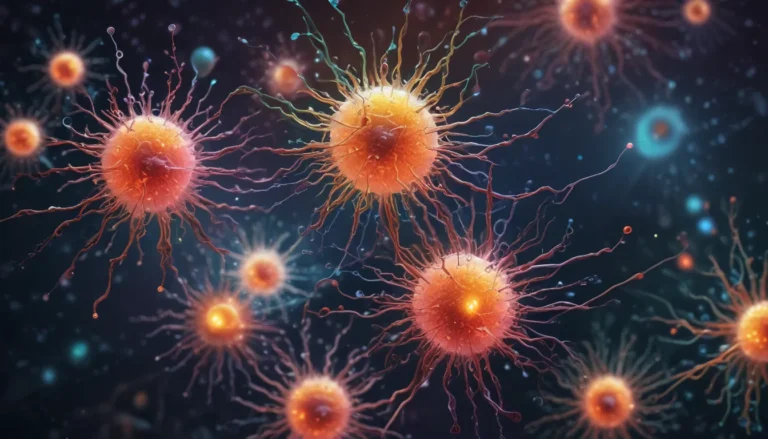A Note About Images: The images used in our articles are for illustration purposes only and may not exactly match the content. They are meant to engage readers, but the text should be relied upon for accurate information.
Welcome to the world of denitrification, a captivating biological process that holds the key to maintaining the delicate balance of nitrogen in our ecosystems. From soil to sea, denitrification plays a vital role in regulating nitrogen levels, reducing pollution, and preserving the health of our planet. Join us as we delve deep into this essential process and uncover 15 mind-blowing facts that will transform your understanding of denitrification.
Unveiling Denitrification: A Vital Microbial Transformation
- Denitrification is a microbial process that converts nitrate (NO3-) into nitrogen gas (N2), effectively removing excess nitrogen from the environment.
- This transformation occurs in anaerobic conditions where oxygen is scarce, making it a unique and intriguing phenomenon that contributes to the nitrogen cycle’s balance.
The Ecological Significance of Denitrification
- Denitrification is an essential component of Earth’s nitrogen cycle, regulating nitrogen levels in ecosystems and ensuring their health and balance.
- This process occurs in oxygen-depleted environments such as soil, sediments, wetlands, and water bodies with low oxygen concentrations, playing a crucial role in maintaining ecological equilibrium.
Unveiling the Denitrifying Bacteria
- Specialized denitrifying bacteria, including species like Pseudomonas and Paracoccus, possess enzymes that facilitate the conversion of nitrate to nitrogen gas, highlighting their significant role in denitrification.
- These bacteria contribute to reducing nitrate pollution in aquatic ecosystems, preventing harmful nitrates from accumulating and causing eutrophication.
Mitigating Human Impacts through Denitrification
- Denitrification plays a vital role in offsetting the effects of excessive fertilizer use in agriculture, reducing nitrate runoff into water bodies, and minimizing pollution risks.
- By naturally removing nitrate from the soil, denitrification ensures the cycling of nitrogen in ecosystems, impacting plant growth and nutrient availability.
Nitrous Oxide and Environmental Factors
- Denitrification produces nitrous oxide (N2O), a potent greenhouse gas that contributes to climate change and ozone depletion.
- The rate of denitrification is influenced by various environmental factors such as temperature, moisture, pH, and organic matter content, affecting the efficiency and speed of the process.
Unraveling the Mysteries of Denitrification
- Scientists continue to research denitrification to uncover new insights, optimize wastewater treatment systems, and address nitrogen-related environmental challenges.
- Denitrification’s role in the nitrogen balance of aquatic ecosystems prevents the accumulation of excessive nitrogen, maintaining the ecological equilibrium of lakes, rivers, and coastal areas.
Embracing Denitrification: Promoting Sustainable Practices
- Integrating denitrification processes in wastewater treatment plants can help reduce nitrate levels and remove excess nitrogen before returning water to the environment, improving water quality.
- While denitrification is crucial for reducing water pollution, it can also lead to nitrogen loss from agricultural fields, affecting crop productivity and sustainability.
Conclusion: Harnessing the Power of Denitrification
Denitrification is an awe-inspiring natural process that showcases nature’s incredible abilities to maintain equilibrium and ensure the survival of diverse life forms. By understanding and promoting denitrification in various ecosystems, we can protect the environment, mitigate pollution, and preserve the health of our planet for future generations.
FAQs: Exploring Denitrification
-
What is denitrification?
Denitrification is a biological process where bacteria convert nitrate compounds into nitrogen gas, removing excess nitrogen from the environment. -
Why is denitrification important?
Denitrification helps regulate nitrogen levels in ecosystems, preventing nitrogen overload, water pollution, and eutrophication. -
Where does denitrification occur?
Denitrification occurs in various environments, including soil, wetlands, and aquatic systems where bacteria thrive in oxygen-depleted conditions. -
How does denitrification impact the environment?
Denitrification maintains the balance of nitrogen in the environment, reduces nitrate pollution, improves water quality, and supports ecosystem health. -
Can denitrification be enhanced?
Yes, denitrification can be enhanced through promoting denitrifying bacteria growth, maintaining suitable environmental conditions, and implementing sustainable agricultural and wastewater treatment practices.
Embark on a journey through the captivating world of denitrification and witness the transformative power of this essential biological process. From the depths of soil to the vastness of oceans, denitrification’s impact reverberates through our ecosystems, shaping the interconnected web of life. Join us in exploring the wonders of denitrification and uncovering the secrets hidden within this vital process.





